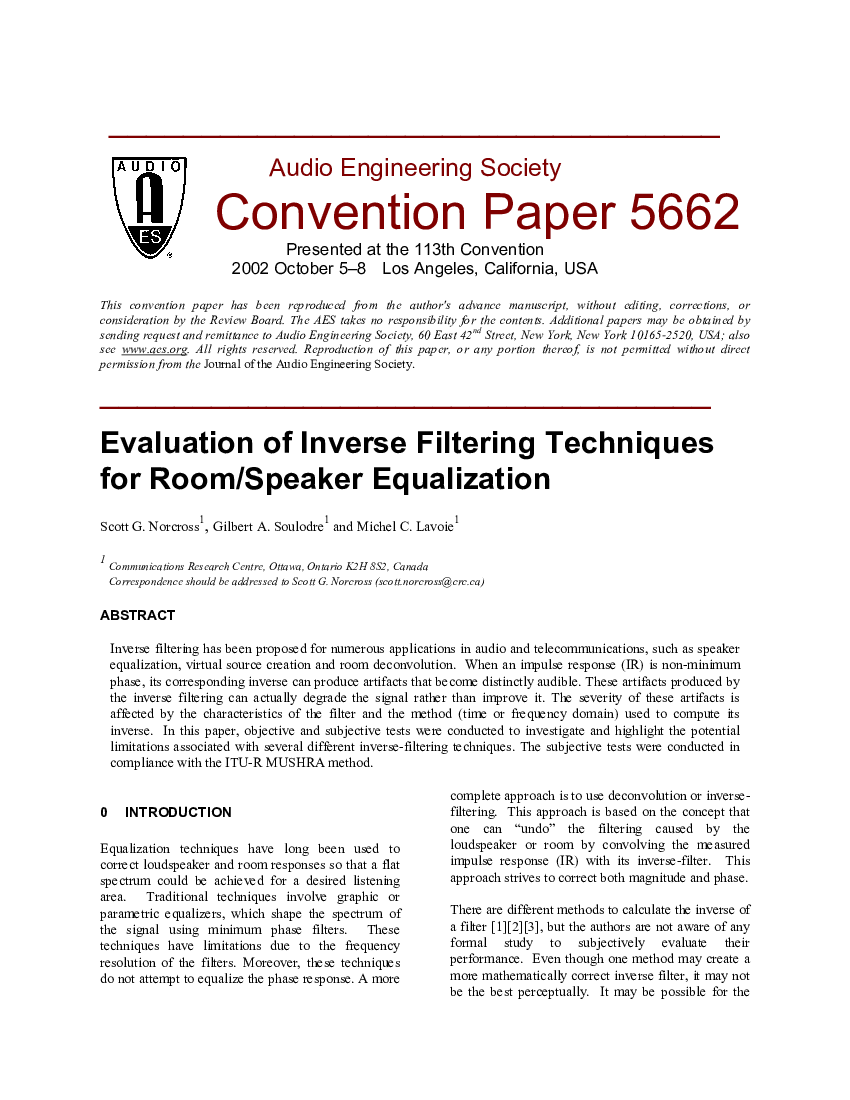Home / Publications / E-library page
You are currently logged in as an
Institutional Subscriber.
If you would like to logout,
please click on the button below.
Home / Publications / E-library page
Only AES members and Institutional Journal Subscribers can download
Inverse filtering has been proposed for numerous applications in audio and telecommunications, such as speaker equalization, virtual source creation and room deconvolution. When an impulse response (IR) is non-minimum phase, its corresponding inverse can produce artifacts that become distinctly audible. These artifacts produced by the inverse filtering can actually degrade the signal rather than improve it. The severity of these artifacts is affected by the characteristics of the filter and the method (time or frequency domain) used to compute its inverse. In this paper, objective and subjective tests were conducted to investigate and highlight the potential limitations associated with several different inverse-filtering techniques. The subjective tests were conducted in compliance with the ITU-R MUSHRA method.
Author (s): Norcross, Scott G.; Soulodre, Gilbert A.; Lavoie, Michel C.
Affiliation:
Communications Research Centre, Ottawa, Ontario, Canada
(See document for exact affiliation information.)
AES Convention: 113
Paper Number:5662
Publication Date:
2002-10-06
Import into BibTeX
Session subject:
Signal Processing
Permalink: https://aes2.org/publications/elibrary-page/?id=11271
(445KB)
Click to purchase paper as a non-member or login as an AES member. If your company or school subscribes to the E-Library then switch to the institutional version. If you are not an AES member Join the AES. If you need to check your member status, login to the Member Portal.

Norcross, Scott G.; Soulodre, Gilbert A.; Lavoie, Michel C.; 2002; Evaluation of Inverse Filtering Techniques for Room/Speaker Equalization [PDF]; Communications Research Centre, Ottawa, Ontario, Canada; Paper 5662; Available from: https://aes2.org/publications/elibrary-page/?id=11271
Norcross, Scott G.; Soulodre, Gilbert A.; Lavoie, Michel C.; Evaluation of Inverse Filtering Techniques for Room/Speaker Equalization [PDF]; Communications Research Centre, Ottawa, Ontario, Canada; Paper 5662; 2002 Available: https://aes2.org/publications/elibrary-page/?id=11271